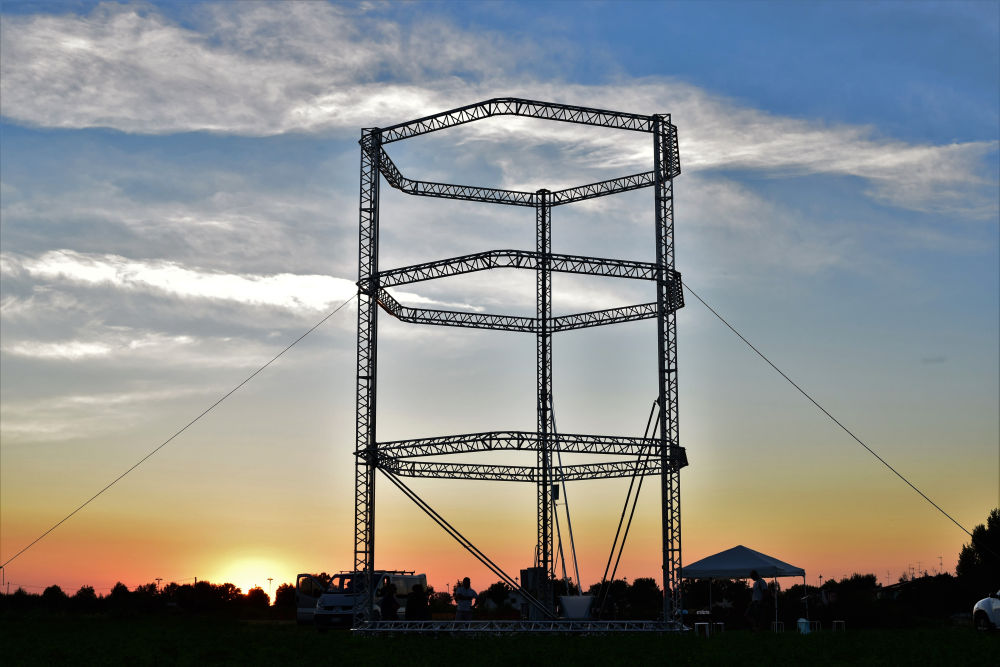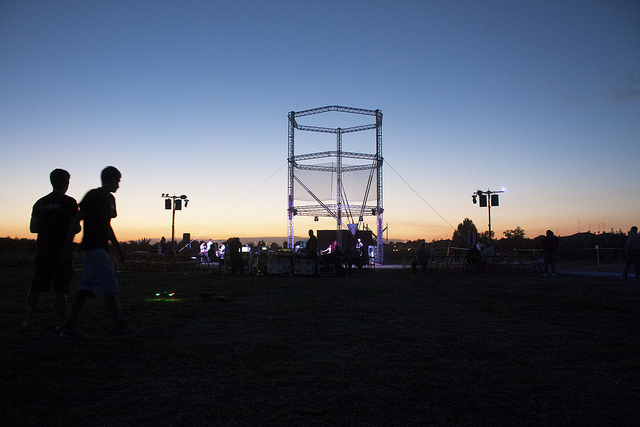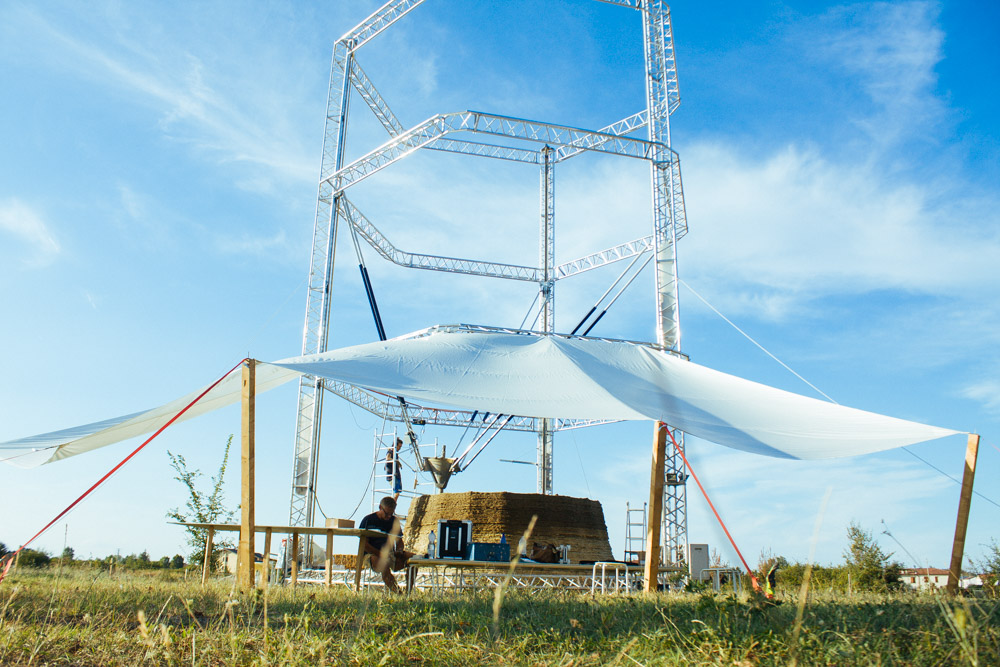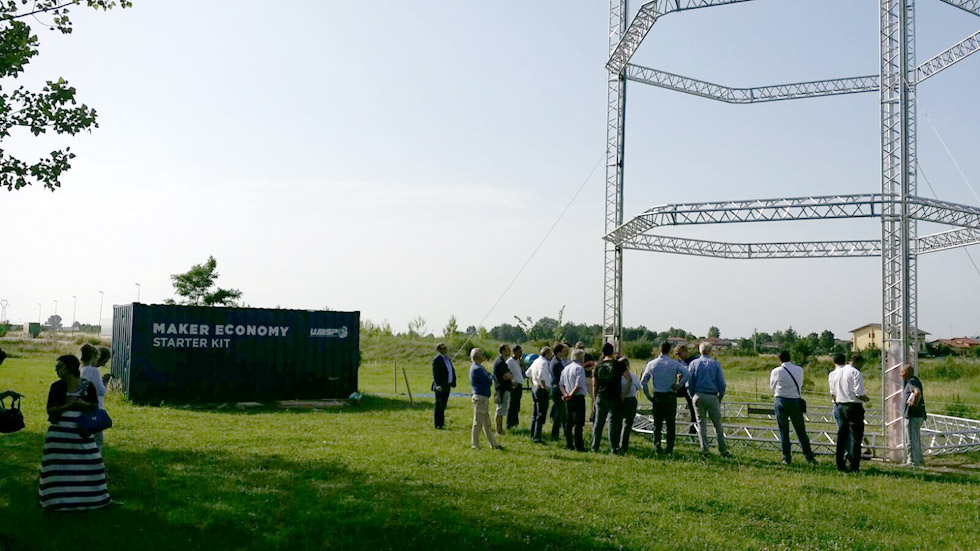BigDelta WASP 12m

BigDelta WASP 12m
A Giant 3D printer resulted from a research project in the field of sustainable housing construction with locally available materials and low costs. This has been WASP’s primary objective since the very start.
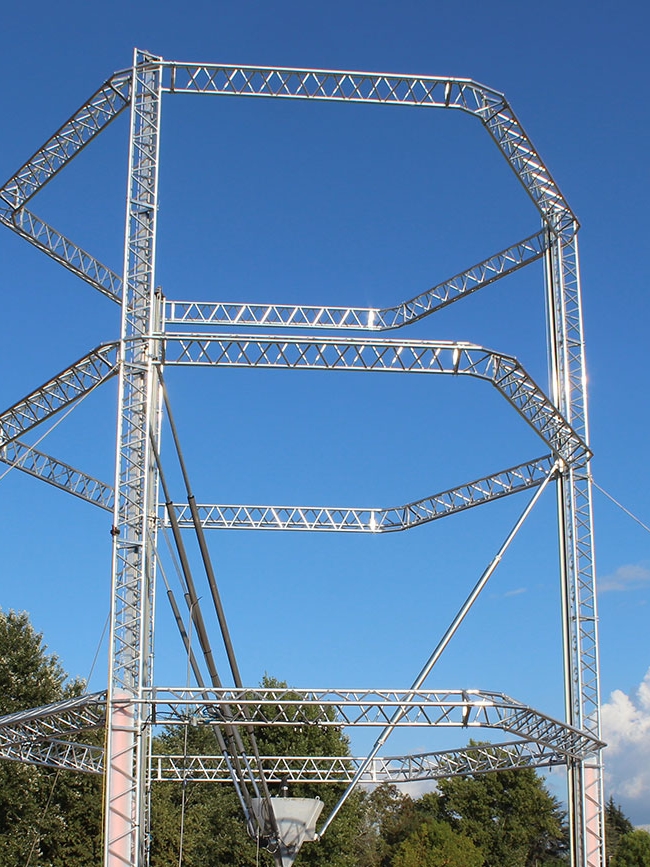
TECHNICAL DETAILS
The 3D world-highest printer – 12 m. high – projected to build houses, now has become a realty and an Italian reality from WASP. The BigDelta configuration is in fact 12 m. high and 7 m. wide , assembled with 6 m. modular arms. All the machine-components have a maximum length of 3 m. so that they can be easily loaded on a trailer and transported.
The BigDeltaWASP 12m works with 220 volts but it can work with 60 volts too, because the engines and the electronic parts have been realized to be powered by solar panels. Three countermeasures reset weights involved, in this way the machine becomes a balanced system. This allows to reduce a lot the consumption, keeping them round 1 kilowatt. Although each engine, the extruder-one inclusive, are 400-watt engines, they never work using te same power.
The BigDeltaWASP 12m can move the extruder with a cargo from 0 to 200kg therefore moving big quantities of material. The only reason why we suggest to reduce the weight round 40-50 kg is to reduce vibrations.
Even though the materials that can be extruded are several, the extruder has been studied to work with blends containing long fiber-materials. The reason of this choise is our project-heart: since the beginning we have been longing to extrude terrain and straw. So, it is not necessary to mince in smaller pieces the fiber, on the contrary it woks better when long.
We have experienced the usage with other inert materials too.
There are two possibilities: we can use raw materials of natural origin or specific techincal materials. For what concerns, raw terrain, it can be lightened with vermiculite or other natural light materials.
The sintetical or technical mixtures can be composed by cement materials based on lime together with or blown-glass either expanded clay. Very good result has been obtained adding polystyrene to the cement. This solution makes the mixture very light and reduces the costs, what we have not examined yet, is the impact that this solution may have on the environment.
It’s much easier to use synthesis-materials or technical materials than natural mixtures because they are still to be fully discovered. Even though our application field is adressed to the second ones: we are testing clay or straw blends with the addition of hemp or hemp derivates; or with the addition of blown materials (really odd is the application in which we add pop-corn inside the mixture to create air bubbles).
Until now we have worked with a maximum speed of 400 mm/s. The rapidity of printing also depends on the amount of material present inside the extruder. The crucial issue with regard to this machine is not speed but acceleration, which is also inversely proportional to the weight of the extruder. The possibility to increase acceleration requires the use of external pumps that reset the load of the machine, continuously supplying the extruder material.
The BigDeltaWASP 12m is suitable to print materials taken from the origin place and this opens the way to a series of innovative applications , considering both the house-building and the recovery of archeological rests or ruins.
270 centimetres of straw+clay wall have been printed; its diameter is 5 m. and 40 tons of mixture have been used. The total layers are 135, with an average weight of 300 kg each, average time to build a layer: 20 minutes. For what concerns the consumption: 2 cubic metres of water and 200 Kwh . Let’s talk about costs: 32 € for the energy employed, 3 € for the water, 10 € for the straw, 3 € for the petrol of the motor-hoe; in total 48 €. Do you want to spare more? If you use your feet to mix, you can reduce the costs of 90%.
Giant 3D Printer
A 3D printer resulted from a research project in the field of sustainable housing construction with locally available materials and low costs. This has been WASP’s primary objective since the very start.
BigDelta the History
The Project
The WASP (World’s Advanced Saving Project) project was founded in 2012 and the objective of the research is clear right from the start: Build a 3D printer able to create houses with materials found on the territory, with a cost tending to zero.

